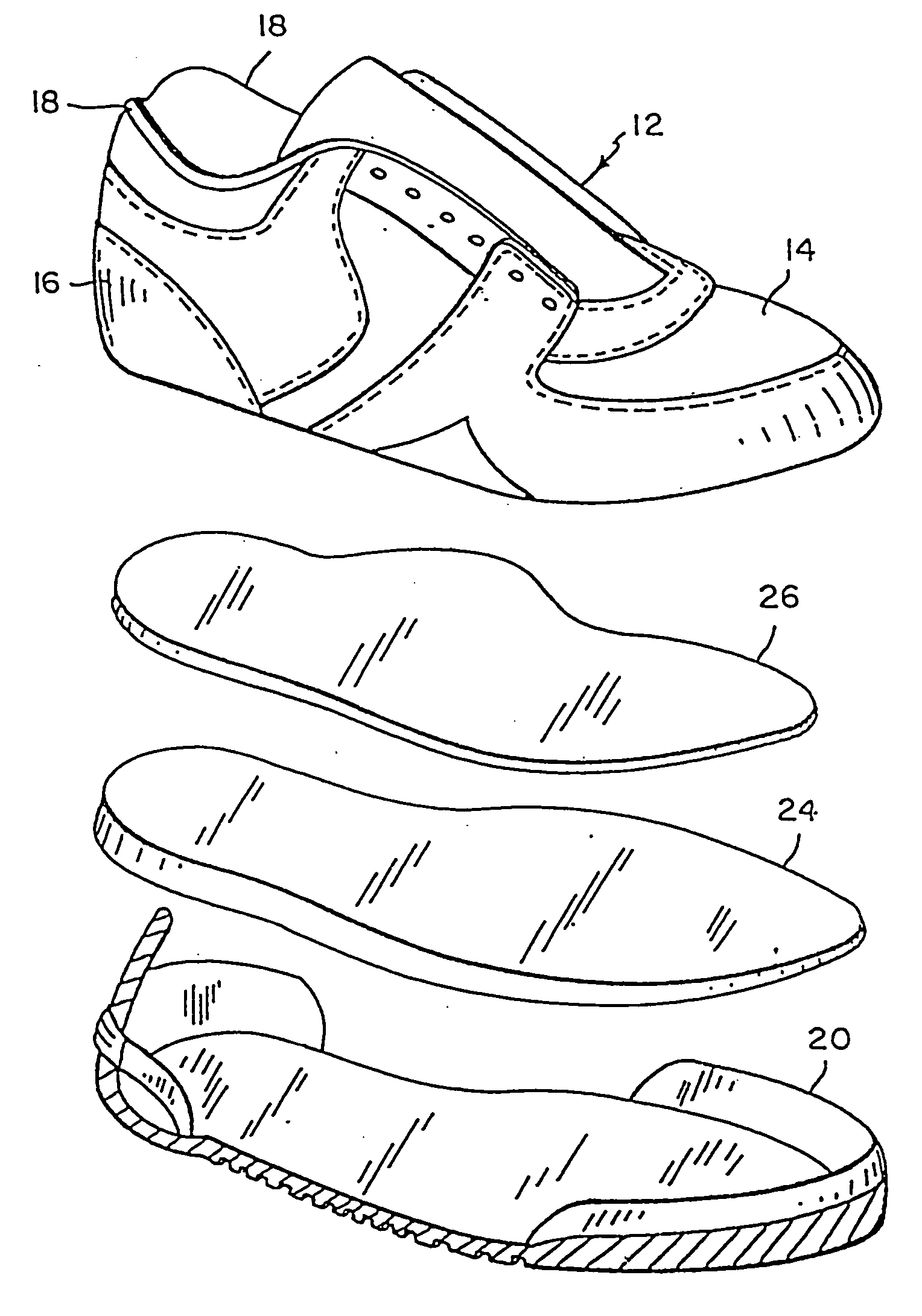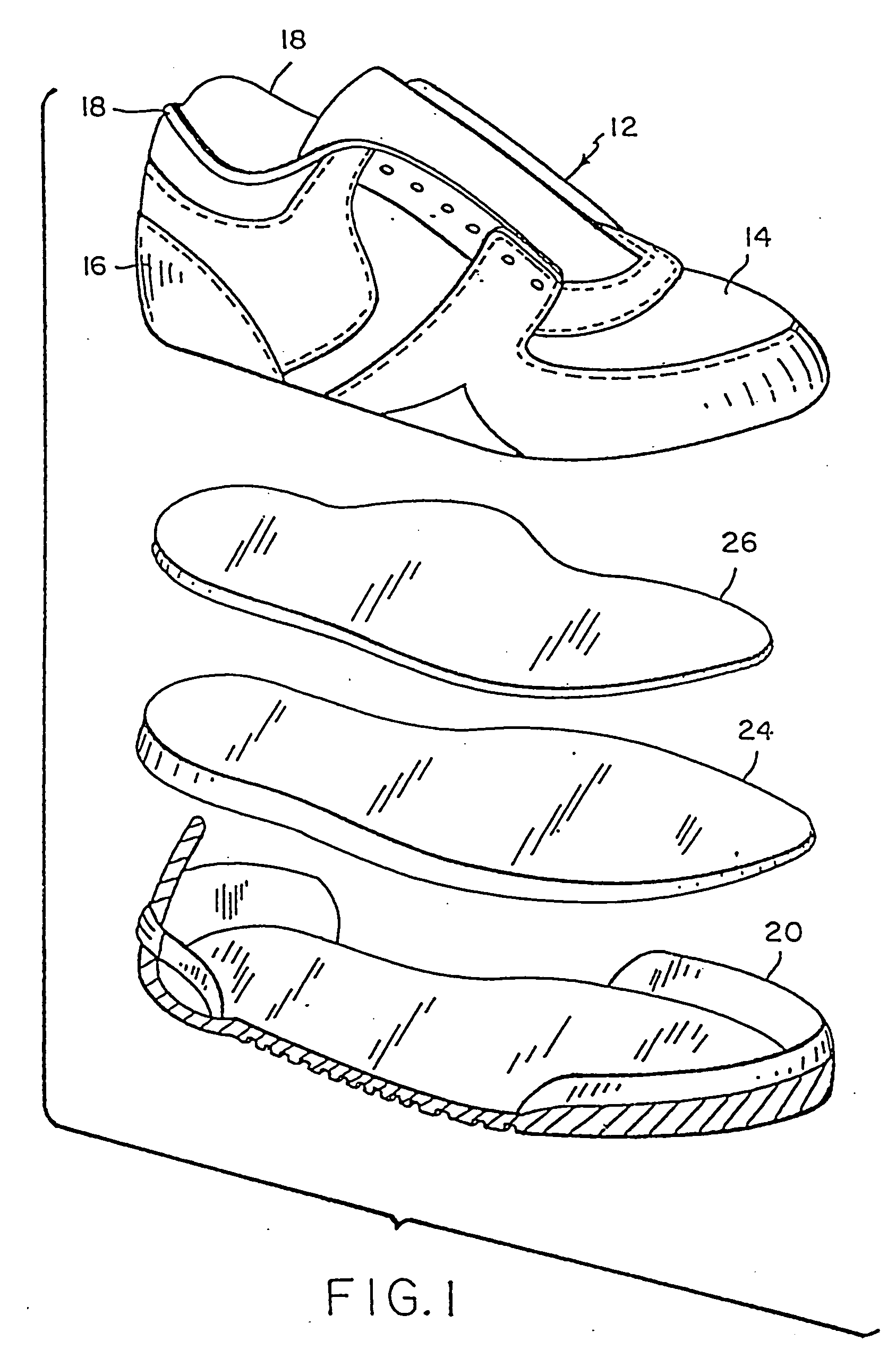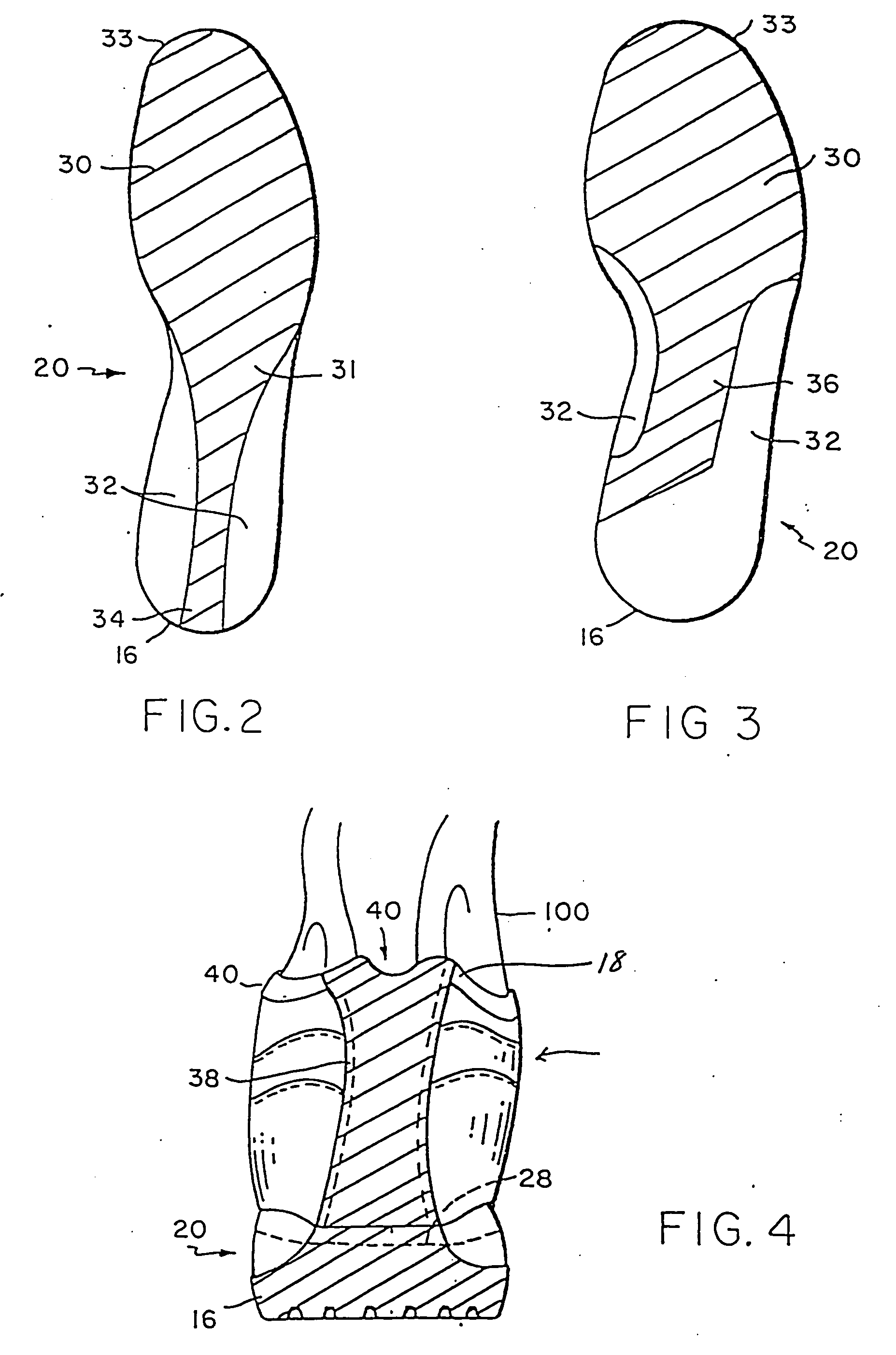Electrically conductive shoe and system
a technology of electrically conductive shoes and systems, applied in the field of shoes, can solve the problems of unsightly and/or structurally awkward or unsound shoes, expensive and poorly designed shoes, and devices that are uncomfortable to wear,
- Summary
- Abstract
- Description
- Claims
- Application Information
AI Technical Summary
Benefits of technology
Problems solved by technology
Method used
Image
Examples
example i
[0072] Fourteen (14) male subjects of about average health, height and weight between the ages of 12 and 48 were tested for increase in their ability to leap vertically upwards from an initial standstill. The subjects stood against a wall with one arm stretched upward to a maximum defining a vertical starting point. With feet spaced about 12 inches apart, the subjects first jumped upwardly as high as possible In stocking feet while standing on conventional non-conductive material (such as insulated rubber) and then in stocking feet initially standing on a sheet of grounded conductive rubber according to the invention. The subjects exhibited the following percentage increases in leap height when standing on the grounded conductive rubber: (a) 12.4%, (b) 3.5%, (c) 4.5%, (d) 4.6%, (e) 10.0%. (f) 23%, (g) 13.50%, (h) 8.50%, (i) 9.5%, (j) 11.6%, (k) 1.1%, (l) 11.2%, (m) 3.5%, (n) 4.5%.
example ii
[0073] Three (3) male subjects of about average health, height and weight between the ages of 22 and 48 were tested for increased ability to perform weight lifting “curls.” Using a Marcy' Fastrack EMI weightlifting apparatus, each subject with feet spaced about 12 inches apart first attempted to curl the maximum amount of weight possible wearing non-conductive athletic footwear. The results for the three subjects were (a) 180 lbs., (b) 180 lbs., and (c) 170 lbs. Standing on a grounded conductive outsole sheet according to the invention, the three subjects next were able to lift a maximum of (a) 190 lbs., (b) 190 lbs, and (c) 180 lbs., an average of about a 6% increase.
example iii
[0074] Seven (7) male subjects of about average health, height and weight between the ages of 22 and 48 were tested for increased ability to compress to the maximum extent possible a manual compression exercise apparatus, known commercially as Bullworker Super XS apparatus, which is disclosed in U.S. Pat. No. 4,290,600. With feet spaced about 12 inches apart, each subject attempted to compress the Bullworker compression device first wearing non-conductive shoes and then standing in stocking feet on a sheet of grounded conductive rubber according to the invention. The subjects exhibited the following percentage increases in the maximum amount (measured in pounds) which they were able to manually compress the device: (a) 7.5%, (b) 7.5%, (c) 15%, (d) 6.30%, (e) 2%, (f) 5%, (g) 3%. The average increase was, therefore, 6.6%.
PUM
 Login to View More
Login to View More Abstract
Description
Claims
Application Information
 Login to View More
Login to View More - R&D
- Intellectual Property
- Life Sciences
- Materials
- Tech Scout
- Unparalleled Data Quality
- Higher Quality Content
- 60% Fewer Hallucinations
Browse by: Latest US Patents, China's latest patents, Technical Efficacy Thesaurus, Application Domain, Technology Topic, Popular Technical Reports.
© 2025 PatSnap. All rights reserved.Legal|Privacy policy|Modern Slavery Act Transparency Statement|Sitemap|About US| Contact US: help@patsnap.com



